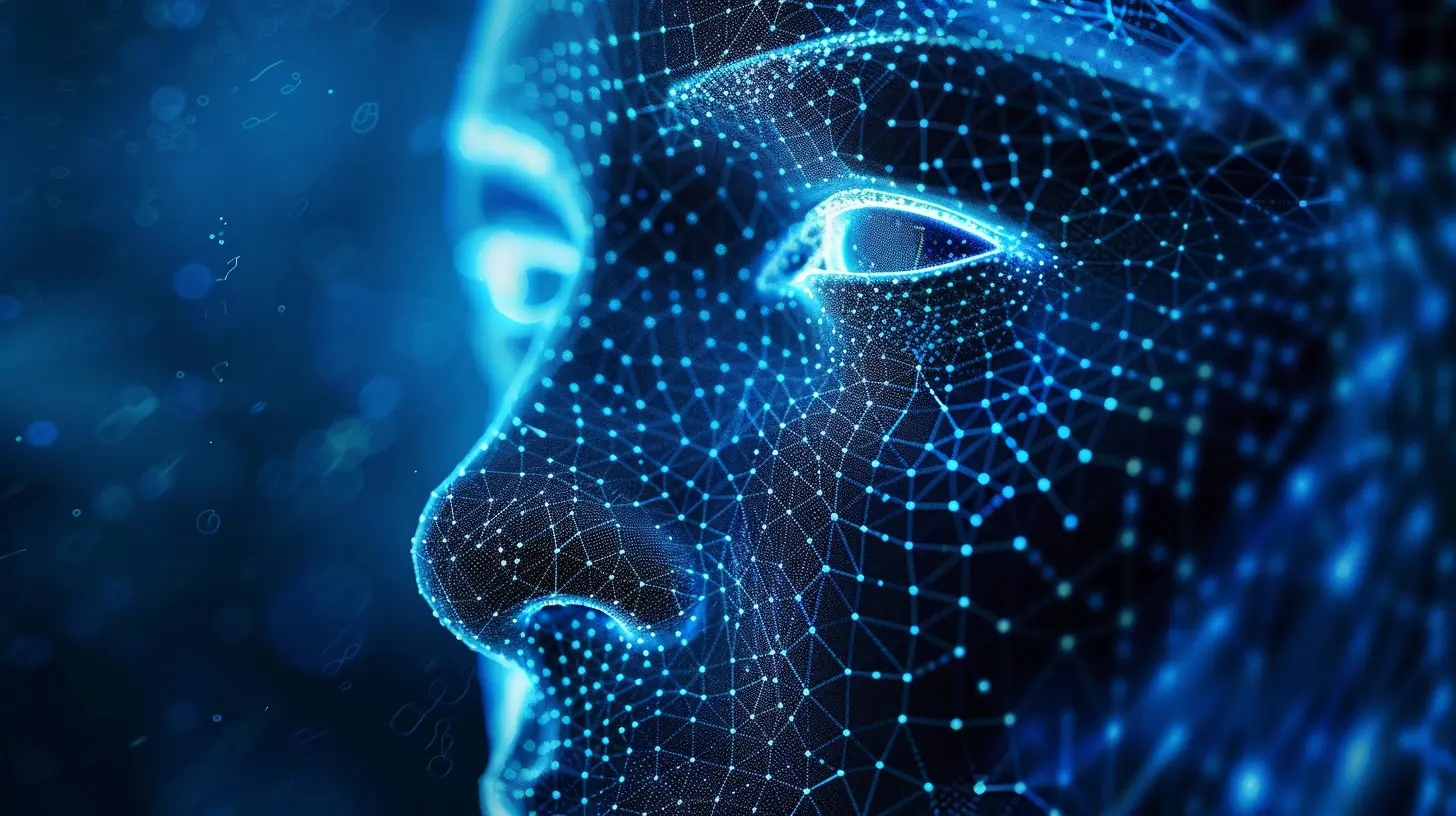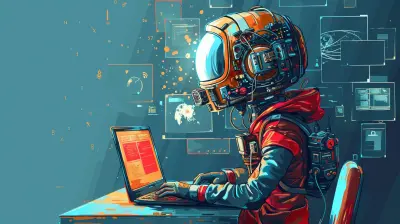Blockchain and the Future of Digital Identity
10 November 2025
Let’s face it — we live in a digital-first world. From checking your bank balance to setting up a Netflix account, your identity is the key that unlocks every digital service. But here's the catch: our current approach to handling digital identity is, well, a bit messy. Password fatigue, identity theft, constant logins... it feels like we’re juggling knives at this point.
Now enters blockchain — the same tech that powers Bitcoin and Ethereum. But what’s exciting is how this technology could completely flip digital identity on its head. So let's dive into an honest, down-to-earth conversation about how blockchain might just be the game-changer we've all been waiting for.
Why Digital Identity Needs a Makeover
You know how annoying it is when you forget your password — again? Or worse, when some company you've trusted gets hacked and your personal information ends up on the dark web?Yeah, it's not great.
We're stuck in a system where our identities are scattered across the internet. Every time we sign up for something new, we hand over personal information like it's candy at Halloween — name, email, date of birth, address, maybe even a driver’s license photo. It's stored who-knows-where on centralized servers that are basically gold mines for hackers.
This model creates more problems than it solves:
- We don’t fully control our own information.
- Companies have too much power over our data.
- It’s a security nightmare.
That's where blockchain starts to look like a shining beacon of hope.
So, What Exactly Is Blockchain?
Let’s break this down without getting too geeky. Imagine a public notebook that everyone can see but no one can erase. That’s kind of what blockchain is. It’s a distributed ledger — which means data is stored not in one place, but across a network of computers. Once something is recorded in this ledger, it's nearly impossible to change. It’s transparent, secure, and decentralized.In the context of digital identity, this could mean:
- No more relying on one organization to keep your identity safe.
- You control your own data.
- You decide who gets to see what, when, and for how long.
Sounds pretty good, right?
What Is a Decentralized Digital Identity?
Let’s use an everyday analogy: think of your physical wallet. Inside, you’ve got your ID, maybe a gym membership card, your health insurance info, and more. You decide who sees what.You don’t hand out your driver’s license to prove you’re over 18 — you just show it. That’s a subtle but important difference. You’re sharing proof, not the actual information.
Decentralized digital identity (DDID) works in the same way. You can prove something about yourself online — like your age or citizenship — without giving away all your personal details.
With blockchain, the concept of Self-Sovereign Identity (SSI) emerges. That’s a fancy way of saying: you’re the boss of your own identity.
How Blockchain Powers Digital Identity
You’re probably wondering, "Okay, but how does this actually work?" Fair question.Here’s the simple version of it:
1. Issuers provide credentials
Let's say your university gives you a digital diploma. That diploma is signed and stored on the blockchain, but it doesn’t include your name or grades — just a cryptographic proof.
2. You store it in your digital wallet
Just like Apple Pay or Google Wallet, but for identity. You store your verified credentials securely on your device.
3. You share it selectively
Need to prove to a job recruiter that you graduated? Share only what’s necessary. They can verify the credential on the blockchain without contacting your school.
All of this happens without relying on a central database that could be hacked or abused. It’s fast, secure, and puts the power back in your hands.
Benefits: Why Blockchain Could Be a Game-Changer for Identity
Let’s spell out the big wins here:1. Privacy Control
You choose what you share, with whom, and for how long. It's like having a remote control for your own data.2. Security
Since information isn’t stored in one place (aka a hacker’s dream database), it’s way harder to steal.3. Portability
Your credentials go with you. Move to a new city or country? Your identity is just a few taps away.4. Verified at the Source
No more fake IDs or sketchy documents. Everything can be traced back to a trusted issuer.5. No More Endless Logins
Seriously — with blockchain-based IDs, you can say goodbye to forgetting your password or answering, "What was your first pet’s name?"Real-World Applications Already Happening
Blockchain and digital ID aren’t just concepts — they’re already being tested in real life.- Estonia has been leading the way with e-residency programs and blockchain-backed government services.
- Microsoft’s ION is a decentralized identity system that runs on the Bitcoin blockchain.
- ID2020, a public-private alliance, is working on giving digital IDs to people without formal identification, which could be life-changing for refugees and marginalized communities.
These aren’t just tech demos. They’re full-blown, stake-in-the-ground implementations that prove blockchain digital ID is more than hype.
Challenges We Still Need to Figure Out
Let’s not put on rose-colored glasses just yet. There are still some bumps in the road. Here’s what we’re up against:1. Adoption Curve
Change is hard. Convincing governments, corporations, and people to shift to a new identity system is a heavy lift.2. Technical Complexity
Blockchain systems can be tricky to implement and maintain, especially when trying to make them user-friendly.3. Interoperability
Different blockchain platforms need to talk to each other — otherwise, we’re just building a new set of silos.4. Legal and Regulatory Issues
How do these identities fit with existing laws? What happens if someone loses access to their wallet?These things need to be ironed out. But as the tech matures and use cases multiply, we’re likely to see solutions to these roadblocks.
What the Future Might Look Like
Imagine this: You walk into a bar. The bartender asks for ID. Instead of pulling out your wallet, you just scan a QR code on your phone that proves you’re over 21 — without showing your photo, address, or full date of birth.Or maybe you apply for a loan. Instead of printing pay stubs and digging up tax returns, you tap a button to share verifiable income info, securely and instantly.
This future isn’t 100 years away. It could be the next 5–10 years. And the best part? It puts us back in charge of our own identity — something we’ve never truly had in the digital world.
Final Thoughts: From Chaos to Control
Let’s be honest — digital identity today is a hot mess. It’s scattered, insecure, and inconvenient. Blockchain offers an exciting path out of that chaos. It gives us tools to reclaim control, tighten security, and simplify our digital lives.But the shift won’t happen overnight. It’ll take cooperation, education, and a serious investment in doing identity the right way.
Here’s the good news: the conversation has already started. And if we continue in this direction, blockchain could help build a digital future that’s not only more secure but also more human.
After all, shouldn't our identities belong to us?
all images in this post were generated using AI tools
Category:
Emerging TechnologiesAuthor:

Kira Sanders
Discussion
rate this article
1 comments
Georgina Blevins
Great insights on the intersection of blockchain and digital identity! Excited to see how this technology evolves in the future.
November 10, 2025 at 6:07 AM

Kira Sanders
Thank you! I'm glad you found it insightful. Exciting times ahead for blockchain and digital identity!


